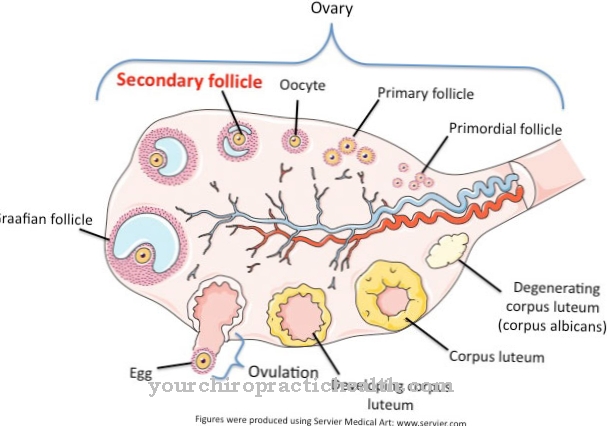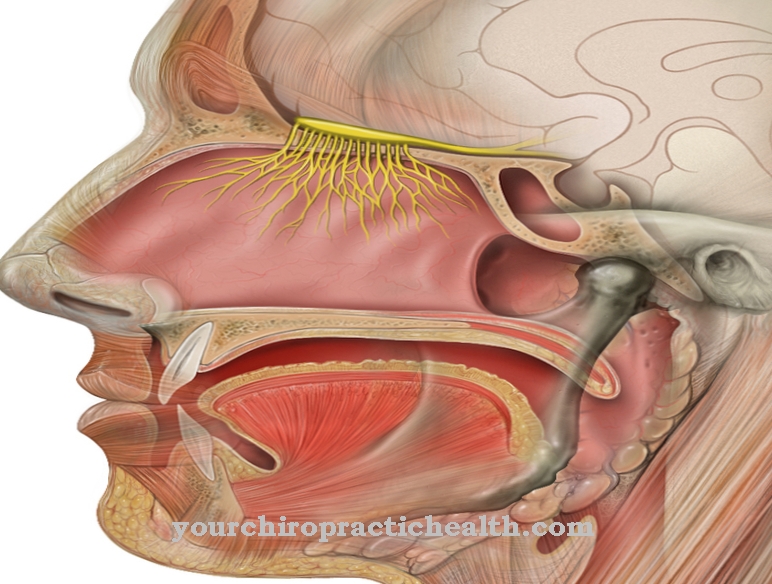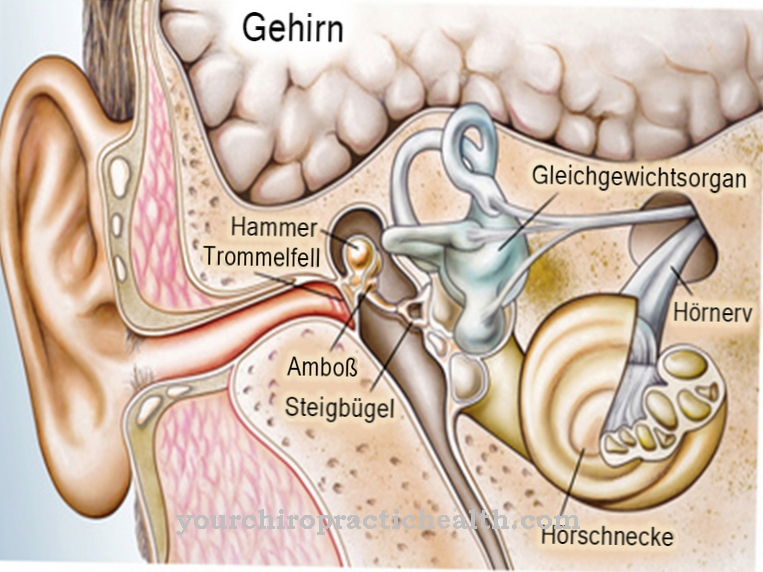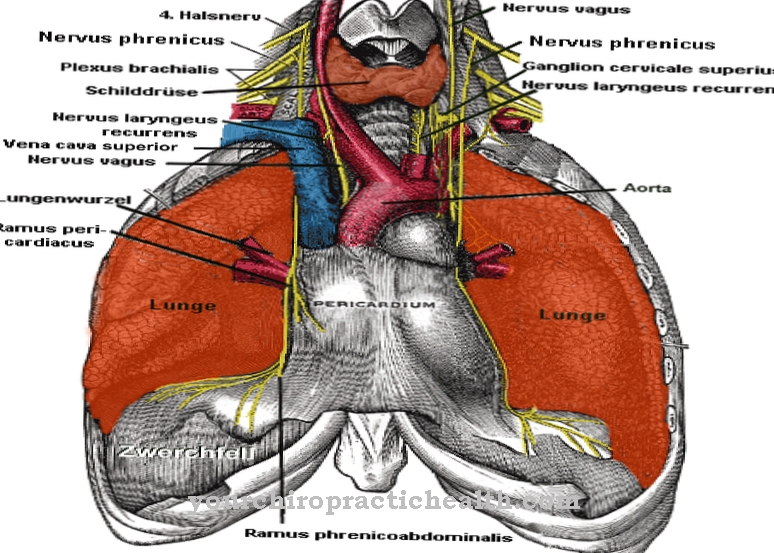The Acetabulum, or Acetabulum called, is a bony structure that can be found surrounded by a joint capsule in the pelvis of vertebrates with developed hind extremities. Due to its cup-shaped shape, it not only accommodates the head of the thigh, but also allows its multidirectional movement by contracting the corresponding muscles. Diseases of the acetabulum always lead to impairments in locomotion or freedom of movement.
What is the acetabulum?
The Acetabulum is designed as a hemispherical depression in the lateral part of the respective half of the pelvis of an individual and serves to accommodate the head of the femur. The Acetabulum is therefore an important part of the hip joint (Articulatio coxae) through which the basin (Pelvis) with the thigh bone (Femur) is connected in a movable way.A layer of cartilage a few millimeters thick rests on the inner surface of the joint socket, separating the two elements from each other and allowing sliding movement. Due to its spherical shape, the hip joint is classified together with the shoulder joint and the metacarpophalangeal joints (with the exception of the thumb) under the collective term "ball joint".
Since the acetabulum or the surrounding fibrous cartilage lip (Labrum acetabuli) encloses the head of the femur over its equator, in this special case it is also referred to as a nut joint. In mammals, the articulatio coxae is the second largest joint. Depending on the size and weight, the diameter of the joint socket in humans is about 2.7 cm.
Anatomy & structure
The three bones that are responsible for the formation of the entire pelvis are involved in the structure of the acetabulum. They meet in the middle of the acetabulum and form a cartilaginous joint in the shape of a “Y”, which, however, ossifies in the course of ontogenesis. This is the iliac bone (Os ilium), the ischium (Os ischii) and the pubic bone (Pubis).While the ischium and pubic bone make up the anterior and posterior parts in the lower area, the os ilium forms the roof of the acetabulum. The ischium is the bone that contributes most to the structure of the acetabulum. The acetabulum is sunk into the pelvis in the form of a cup, the edges of which are set off in the form of a crater from the surrounding bone of the pelvis. The circumferential, uneven, thickened bone edge (Limbus acetabuli) serves as an attachment point for the arched fibrous cartilage lip, which reduces the opening of the joint socket and stabilizes the femoral head in the acetabulum. Near the pubic opening (Obturate foramen) is the wall of the acetabulum through a gap (Acetabular notch) interrupted, which gives the acetabulum the shape of a crescent moon. However, the recessed area is affected by the Ligamentum transversum acetabuli includes. In the center of the acetabulum there is a shallow pit that Acetabular fossa. About the one starting there Ligamentum teres femoris, which also docks on the femoral head, the thighbone is held in the socket.
Function & tasks
The primary function of the acetabular cup is to provide a flexible connection between the femur and the pelvis. The associated, extensive freedom of movement of the thigh in relation to the rest of the body forms the basis for the individual's ability to move.
Due to the ball-like shape of the hip joint (Articulatio coxae) all three degrees of freedom for the femur are accessible. This allows the thigh to move in six different directions. In addition to bending (flexion), stretching (extension), approaching (adduction) and spreading (abduction), turning (internal rotation) and turning (external rotation) of the thigh bone are also possible.The bony, cartilaginous and ligamentous guidance of the hip joint, however, somewhat restrict these directions of movement. The femur is moved in one of the six directions via specific muscle groups, some of which work antagonistically. Due to the extensive range of motion, the hip joint is equipped with a very strong ligamentous apparatus.
Illnesses & ailments
Diseases of the hip joint can be of a degenerative, inflammatory, congenital or accident-related nature. One of the most common diseases is coxarthrosis, which is characterized by inflammation and regression of the articular cartilage and, in addition to pain, causes a restriction in freedom of movement. Coxitis fugax, which occurs in children and adolescents, is also one of the inflammatory symptoms of the hip joint. The aseptic inflammation leads to referred pain in the knee, hobbling and a restriction in hip rotation.
Flattened acetabular cups are also less common diseases, which occur either in newborns due to development or in old age. The hip dysplasia causes the head of the thigh bone to slide out of the acetabulum, which leads to incorrect loading, increased cartilage abrasion and, as a result, early osteoarthritis.
The genetically manifested protrusion of the acetabulum and femoral head (Protrusio acetabuli) significant impairments. A restriction in the rotation, adduction and abduction of the thigh becomes apparent, which later makes it more difficult to flex and straighten the leg. But traumatic events that end in a fracture of the acetabulum as a result of direct or indirect violence cause considerable discomfort.In addition to a disturbed function of the articulatio coxae, there is a malposition or shortening of the leg. Due to other concomitant diseases, such as rickets or immobility after muscle paralysis, in some cases there is a misalignment of the femoral neck. Depending on the angle, a distinction is made between Coxa vara, the "knock-knees", and Coxa valga, the "bowleg".
























.jpg)



